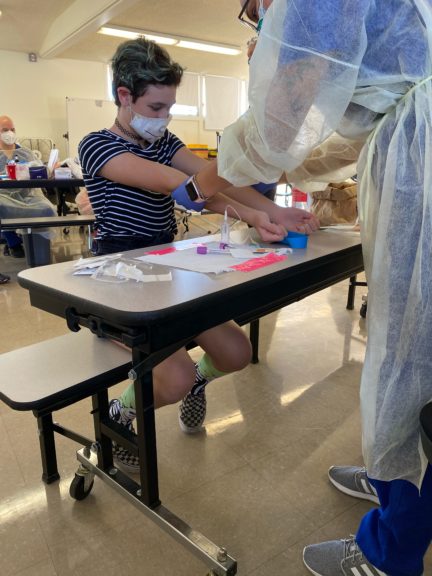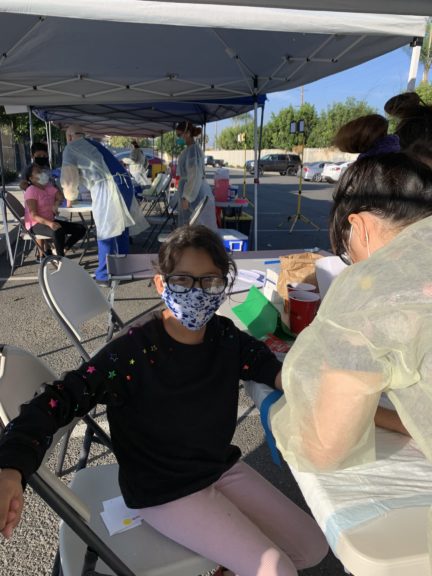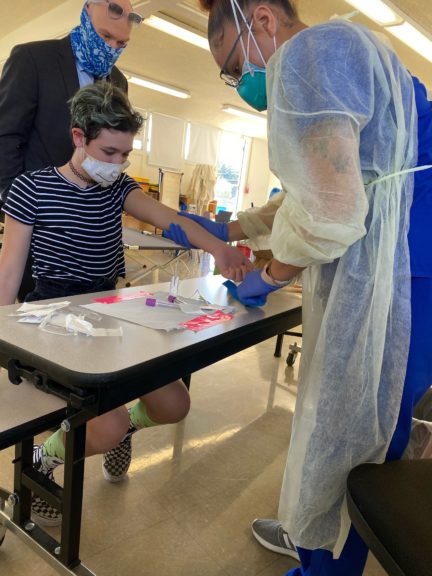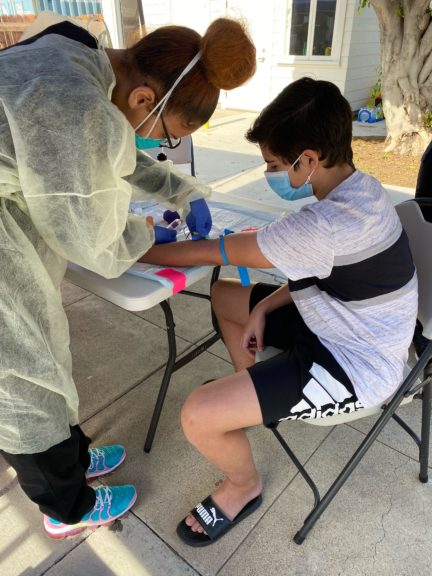Two doctors – one a rising star in infectious disease research, the other a nationally known pediatric pulmonologist – are nearing completion of a seminal study on COVID-19 transmission at four Orange County schools and how closely students and staff are following mitigation procedures such as wearing face coverings.
The doctors believe the study is the first of its kind in the country, and that it could shed light on such critical issues such as the role that kids play in the spread of SARS-CoV-2, the novel coronavirus that has led to the deaths of some 300,000 Americans and counting.
“We’ll never understand COVID-19 disease until we understand it in children,” says Dr. Dan Cooper, who treats kids with lung conditions at CHOC and who serves as director of UC Irvine’s Institute for Clinical & Translational Science.
Dr. Cooper was reiterating a comment made by UCI colleague Dr. Donald Forthal, chief of the Division of Infectious Diseases at the university, in the early stages of the pandemic.
Dr. Cooper is a multiple principal investigator of the O.C. school study along with Dr. E.R. Chulie Ulloa, a CHOC infectious disease specialist and an assistant professor in the Department of Pediatrics at the UCI School of Medicine.
Drs. Coopers and Ulloa provided an update on their novel study of four O.C. middle and high schools during a recent presentation on Research Day. The study, a partnership of CHOC, UCI Health and the Orange County Health Care Agency, began at the end of October and will conclude before Christmas.
Results are expected during the first quarter of 2021.
“We understand little about the immune responses to COVID-19 in children, but hopefully we’ll be able to shed some light with this study,” Dr. Ulloa says.
Vaccinations in adult U.S. healthcare workers began in mid-December at a time when the country remains in the grips of a terrible increase in COVID-19 infections and deaths – the dreaded “second surge” healthcare experts predicted would happen this winter.
“We’re just beginning to understand and accumulate the knowledge we need to eventually make definitive statements about SARS-CoV-2 transmission in children,” Dr. Cooper says. “This information will ultimately inform decisions around vaccinations in the pediatric population.”
Preliminary Results
Although the numbers continue to increase as the study nears completion, as of mid-November — when Drs. Cooper and Ulloa provided their update on Research Day — 187 students and 100 staff members at four demographically diverse schools had undergone nasal-swab tests, with none testing positive for COVID-19, Dr. Ulloa reported.
Additionally, nearly 90 percent of those students agreed to have their blood drawn to check for antibodies that showed they had been exposed to the novel coronavirus. The positivity rate for those tests came back at 8.5 percent.
This number is encouraging, Dr. Ulloa says. She explains that nearly all these COVID-19 antibody-positive students were completely asymptomatic or mildly symptomatic.
“We’re not sure yet if this positivity rate shows that children do indeed have protection (against COVID-19), but it’s certainly a positive sign,” Dr. Ulloa says. “We will conduct more research in the lab to see if those antibodies are able to neutralize or inhibit the replication of the virus.”
The preliminary results of the study – which involves students from a charter school and a public school in Santa Ana, a charter school in another city that primarily serves students with special needs and a private school elsewhere whose students come from middle- to upper-class families – suggests that children likely are not super-spreaders of COVID-19, Dr. Cooper says.
“We still don’t know why that appears to be the case,” he says.
In addition to testing for COVID-19 with the nasal swabs, the school project team – which includes a total of nearly two-dozen people – also is testing for 21 other respiratory infections, such as the common cold, in the students. The thinking is that these additional tests will help determine how well students are following COVID-19 mitigation measures such as social distancing and frequent washing of hands – which should help prevent them from catching many viral diseases.
“We hope to be able to see if there’s a relationship between how well the school is able to put into place mitigation procedures and the degree of viral infection,” Dr. Cooper notes.
The pool of students involved in the research project has expanded to kids ages 7 to 17, from ages 10-15 at the onset. Dr. Cooper points out although data are accumulating through public health agencies on SARS-CoV-2 in school-aged children, there are few, if any studies like this one that involves students and school staff as research volunteers and who must consent to participate. These types of studies can often add to our knowledge of disease to a much greater extent than simple descriptions of ongoing data, he says.
“In addition, we’re capturing data from an age group that hasn’t been involved in vaccine clinical trials before,” Dr. Ulloa adds, “and these data may shed light on efforts to test COVID-19 vaccines in the future.”
Drs. Cooper and Ulloa both praised the cooperation of school officials and students in allowing them to carry out this seminal study, in which participants also receive free of charge a complete blood count to check for anemia and a full lipid screening to check the amount of cholesterol and triglycerides in their blood.
“In order to pull this off,” Dr. Cooper says, “we had to have very close relationships with the schools, with the parents, and with the kids.”
Dr. Ulloa’s fluency in Spanish and leadership has helped a lot, he says. So has her serving as a strong pediatrician-scientist role model for the children.
“We’ve really been active in the community for a while, which has helped establish trust,” Dr. Ulloa says.
Dr. Cooper notes that the school research team already is talking to the National Institutes of Health about putting together a project to follow middle- and high-school kids who are infected with the coronavirus over the next five years to determine the long-term effects on such things as cognitive development and the role of exercise in keeping the disease in check.
COVID-19 vaccine guide: Information to share with patients, families








